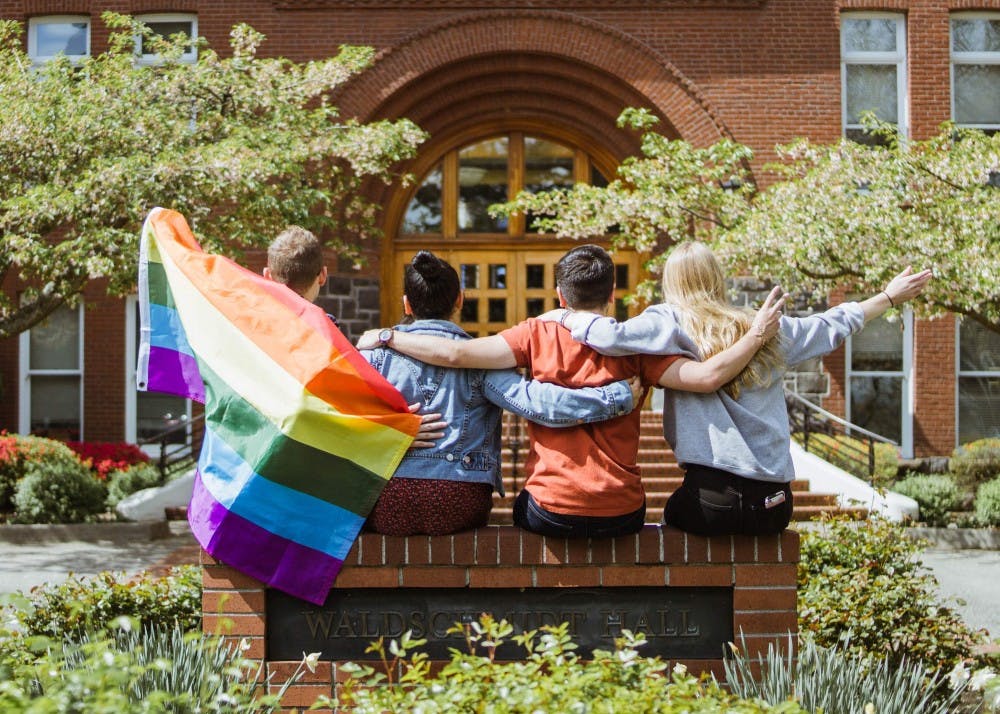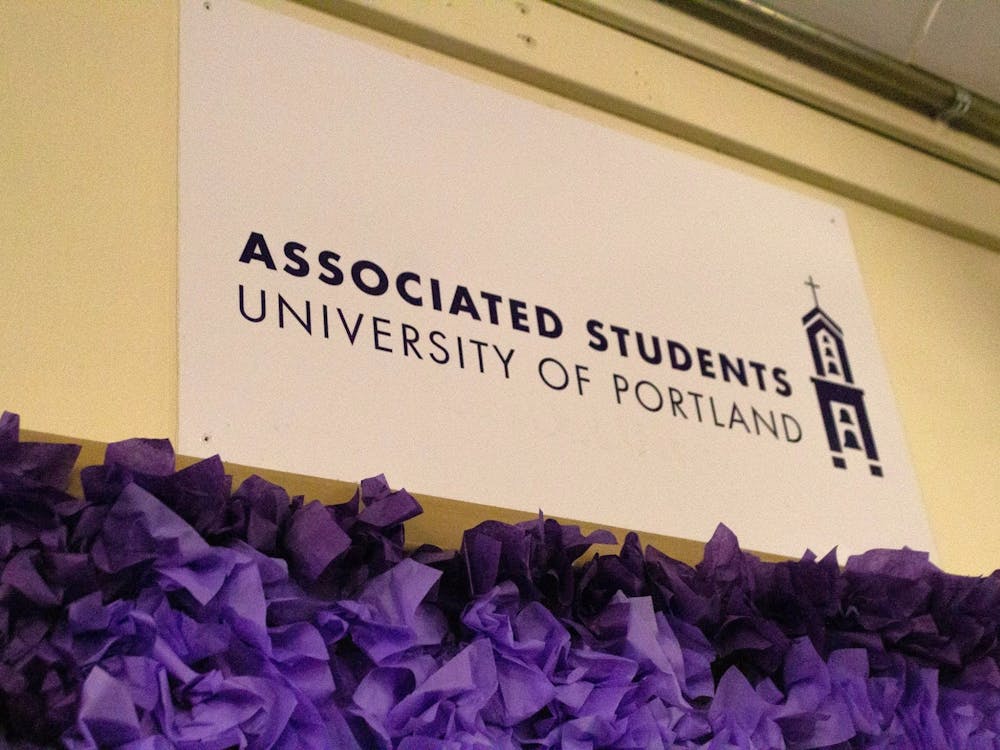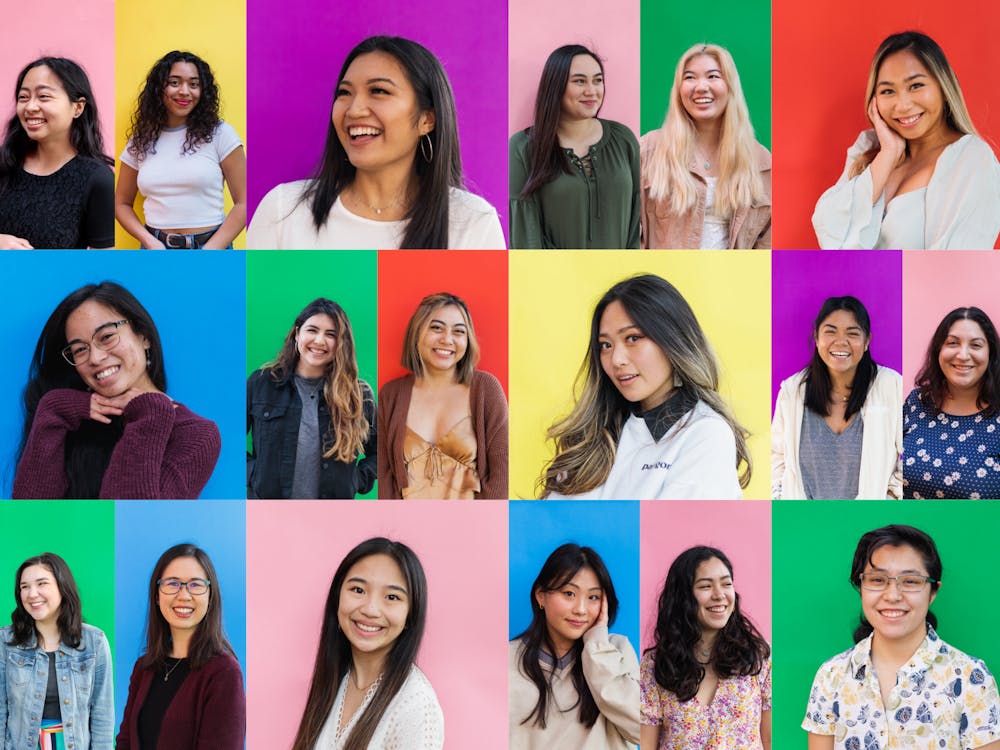Carolina Cortes was on her way to a diversity leaders roundtable in the newly-opened Diversity Center last fall, eager to see the space for the first time. The sophomore and president of La Mesa Redonda is an advocate for diversity and inclusion on campus and considered the opening of the center a major improvement.
But when she walked into Buckley Center 102 that day, she was taken aback by the size of the space, immediately noting that it wouldn’t be functional for her club’s meetings and having a hard time envisioning clubs bigger than Mesa using it. She was glad, though, that other clubs had written their reservations to use the room on the whiteboard and that there were flyers and lists of campus resources sprawled on the whiteboard and desks. She was also enthusiastic that some space dedicated to diversity and inclusion simply existed now on campus.
Now, a few months after the Diversity Center’s opening, Cortes said she uses the center daily to hang out with friends or do homework in the breaks between classes. But she would still like the space to be expanded and updated with different furniture and art, as well as house the office of at least one staff member doing diversity and inclusion work.

Carolina Cortes, La Mesa Redonda president
“My only worry is that now that we have it, they’ll (administration and donors) say, ‘Oh, we don’t need much else,’ and it’ll slow down from here, when I only want it to pick up more speed and traction,” Cortes said.
Comments about the Diversity Center mirror sentiments expressed about diversity and inclusion efforts in general. Many people noted there have been improvements, but that they’re not enough. The topic can be sensitive at UP, and some people were hesitant to talk on the record. But those who did pointed to problems regarding funding, hiring of diverse faculty and the overall campus culture surrounding diversity and inclusion.
Diversity Center
Many students, faculty and staff highlighted the opening of the Diversity Center in September 2018 as a step in the right direction for diversity and inclusion efforts on campus, although many also expressed conflicted feelings as they think it’s inadequate.
Senior and ASUP president Sitara Nath explained that the Diversity Center is an improvement and that she tries to hold certain meetings there. However, she refrains from calling it a “center” and instead calls it the diversity “space” as she doesn’t appreciate the finality “center” implies.
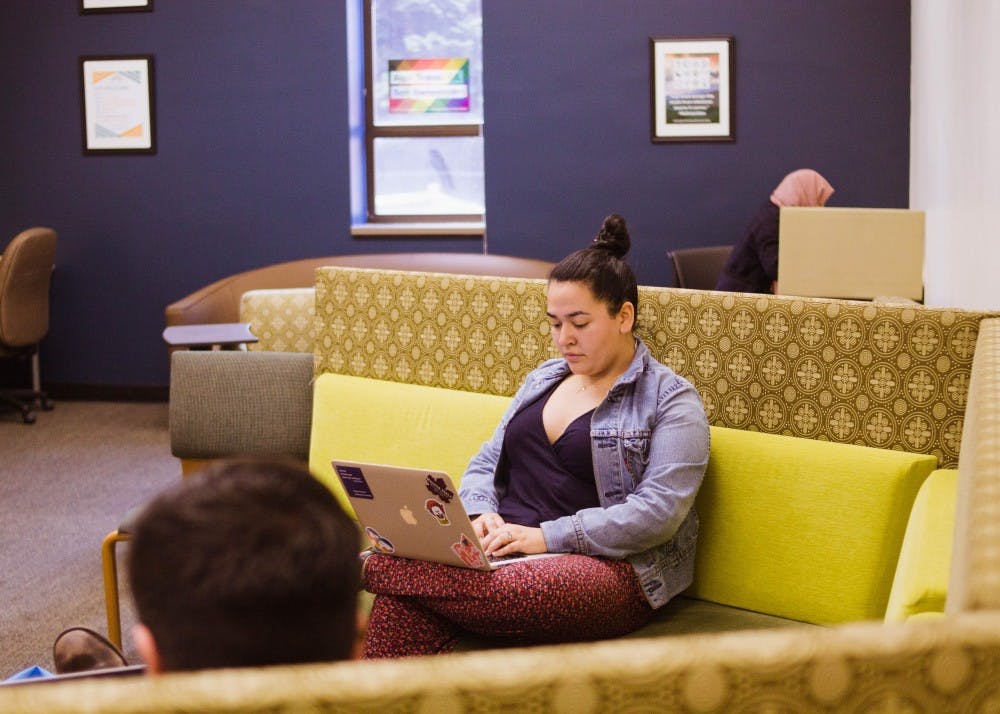
“It has provided some semblance of a sanctuary for students, but at the same time, it’s nowhere near where it needs to be,” Nath said. “I’m worried that it’s going to be a superficial, image-oriented step.”
Some students explained that the Diversity Center’s size can hinder diversity and inclusion.
“Different clubs on campus have to fight for our limited event space here. Some of the clubs are getting so big that there’s no place to meet on campus, and we have to compete for different spaces and booking,” said junior Sabrina Legaspi, diversity collaborator and vice president of FASA (Filipino American Student Association). “If you’re building this whole new academic hall, we don’t see why you can’t offer us more space.”
Sophomore and Black Student Union (BSU) treasurer Sharif Morton explained that to him, the size of the Diversity Center promotes a problematic message about diversity and inclusion at UP.
“Minority groups are minority groups. We’re not the majority, so we don’t have a lot of people,” Morton said. “Having a small space kind of perpetuates that. It’s almost constricting our growth and puts a cap on the club.”

Sharif Morton, BSU treasurer
Senior diversity collaborator and Mixed Student Union president Marisa Johnson agreed that her opinion of the Diversity Center is complex because, on paper, it fulfills a request students have made for some time, while in reality, it’s insufficient. She explained that while many students are upset about the size of the space, the more pressing issue for her is its lack of resources.
“What it is is just a room, and I think that’s an issue,” Johnson said. “Students should be fighting for a place similar to the SARC — a decent-sized space that’s multi-use, with office space and (staff) doing diversity work and student resources in it. That’s feasible and what this campus actually needs.”
Morton and other students also mentioned that the space is not as welcoming and usable as it could be, due to the lack of artwork, movable furniture and projector.
“It seems like they gave it to us bare bones and they expect it to be like a ‘bring your own diversity’ sort of thing. Granted, that’s the way it is at most places,” Morton said.
There are summer plans to add more to the space, explained Eduardo Contreras, the assistant provost for International Education, Diversity and Inclusion, whose office manages the Diversity Center. Based on a fall 2018 survey about the Diversity Center, his office will try to find artwork and furniture from local minority-owned businesses and also install a television and computer in the room.
Funding
The perceived inadequacy of the Diversity Center is connected to what some students characterized as a lack of financial support for diversity clubs and Diversity and Inclusion Programs. Clubs are student-initiated and funded by student government (ASUP), whose money comes from the $95-a-semester student activities fee.
Diversity and Inclusion Programs (DIP) is part of the university’s Office of Student Activities, which is funded through the administration’s budget, specifically the Division of Student Affairs. DIP plans events year-round for the entire campus, hires student diversity collaborators, runs UP Connections and organizes Diversity Dialogues.
ASUP has significantly increased its financial commitment to diversity and inclusion clubs, raising its allocation this past semester from $15,658 to $34,214.20. That’s funding for one semester. In contrast, administration funds for DIP for an entire year have remained at $15,000 for the past three years. The last time DIP got an increase in funding was in 2016, when its annual allocation increased by $500. Since then, the target student population for DIP has increased by 19 percent. DIP requested more funding for the 2019-20 academic year but was denied by the Division of Student Affairs.
Yuri Hernández Osorio, coordinator for Diversity and Inclusion Programs, said inadequate funding undermines UP’s stated commitment to diversity and inclusion.

Yuri Hernández Osorio, coordinator for Diversity and Inclusion Programs. Photo Submission: Hernandez Osorio
“We don’t just have to say we’re committed to the work — we have to show we’re financially committed to the work,” Hernández Osorio said.
Despite ASUP’s overall financial allocations to diversity clubs, some club members said they were disappointed with their allocations for this year. Clubs submit their budgets through Engage, after which they undergo various steps of review from Brandon Wester, the director of finance for ASUP, and the Financial Management Board. The budgets are later voted on by the ASUP Senate. Some of the factors ASUP considers when determining the amount to grant a club include the growth of the club, how engaged students are and how well its leadership transitions from year to year, Wester said.
Legaspi, vice president of FASA, explained that 2019 was the first year FASA charged admission for Pilipino Cultural Night (PCN), because it was not expecting a nearly $400 cut from what it received in spring 2018. The entrance fee was $5 per person so the club could regain what it spent on PCN and ensure sustainable funding for future years, she said.
Wester pointed out though that there are more clubs this year, while ASUP still has the same amount of money to allocate.
“We’re getting more clubs and organizations, more asks, and we’re having to cut every club more, despite their positive factors,” Wester said.
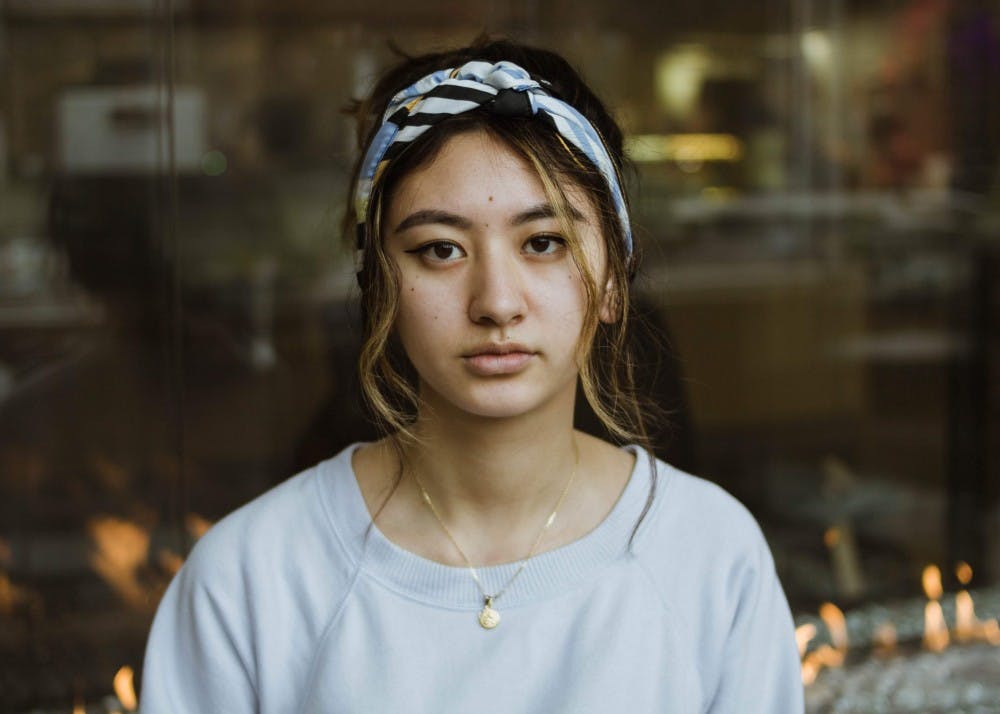
Sabrina Legaspi, diversity collaborator and FASA vice president
Wester also mentioned that clubs can solicit funding through the Opportunity Grant, a source of funds for events or costs that clubs did not anticipate. He pointed out that For the Love of Chocolate, the BSU poetry slam, was funded by this grant.
With the number of clubs increasing, Wester said he’d like to raise the student activities fee to grant more money to all clubs.
“If we increase the student activities fees, which I think we should do to be more in line with other universities, we would be able to fully fund and then some if every student paid about $150 per semester,” Wester said.
Faculty, Staff and ASUP advocacy
“I’m constantly impressed with some faculty and the lengths they go to for students of color,” Legaspi said.
Many students echoed Legaspi’s sentiment and expressed appreciation for faculty and staff who make it clear that they advocate for diversity, equity and inclusion on campus. For example, Nath said that faculty advocacy was critical in getting the university to recognize Martin Luther King Jr. Day. Students also highlighted other faculty initiatives, like Faculty Development Day, that they saw as enhancing diversity and inclusion.
Faculty Development Day is a time in May for professors to both reflect on their work and learn from their colleagues, explained Hannah Highlander, chair of the Committee on Teaching and Scholarship, which plans the event. The Provost’s Office provides financial support, and professors can submit proposals for the theme of the day to the committee.
Last year, the proposal of Christin Hancock, professor and chair of the History Department as well as a professor of gender and women’s studies, and Molly Hiro, an English professor, was selected as the theme of the day. It was titled “Inclusive Excellence in the Student-Centered University: Why It Matters and How We Get There.” They invited Mary James, dean for Institutional Diversity at Reed College, and Lisa Perfetti, associate dean for Faculty Development at Whitman College, to give the keynote speech and lead smaller sessions.
Hancock said that she estimated about 150 to 200 faculty attended, and that many of them appeared to appreciate the sessions.
“Molly and I got a lot of ‘thank you’s,’’’ Hancock said. “I think the speakers were really well received. It meant a lot to have this day in which equity was being discussed by everyone.”
In September 2018, Sarina Saturn and Louisa Egan Brad, psychology professors, organized two events about institutional betrayal and courage, for which they coordinated a survey collecting data about how the university treats reports of sexual assault and whether or not it supports all members of the UP community.

Sarina Saturn, psychology professor
Egan Brad and Saturn’s submission for Faculty Development Day stems from this work and was chosen as the theme for this year. “Compassionate listening and responding: How to transform UP into a more diverse, supportive, and inclusive campus” will bring to UP Nana Osei-Kofi, the director of the Difference, Power and Discrimination Program at Oregon State University, and Joanie Levine and Yehudah Winter, facilitators with the Compassionate Listening Project.
“It is building off of our events about institutional courage, as well as some of the stories we’ve heard from students from marginalized populations, or victims of racial, sexual, physical, verbal violence on what they’re experiencing here on campus,” Saturn said. “(We want) to listen to those stories very compassionately without our own interpretations or egos getting in the way and learn how we can be true advocates for students.”
“Through the Fog” is another faculty-led advocacy initiative that emerged from the Title IX team’s effort to focus more on violence prevention. Alexandra Hill, German professor, co-director of the gender and women’s studies minor, and deputy Title IX coordinator for education, along with Saturn and communication professor Jeff Kerssen-Griep, created this session that they’ve taught to various residence halls, athletic teams and clubs this semester.
“‘Through the Fog’ tries to get at some of the issues that we think are really root causes of gender-based violence — we’re talking about issues of identity, power and privilege, and how all of those things affect interpersonal relationships,” Hill explained.
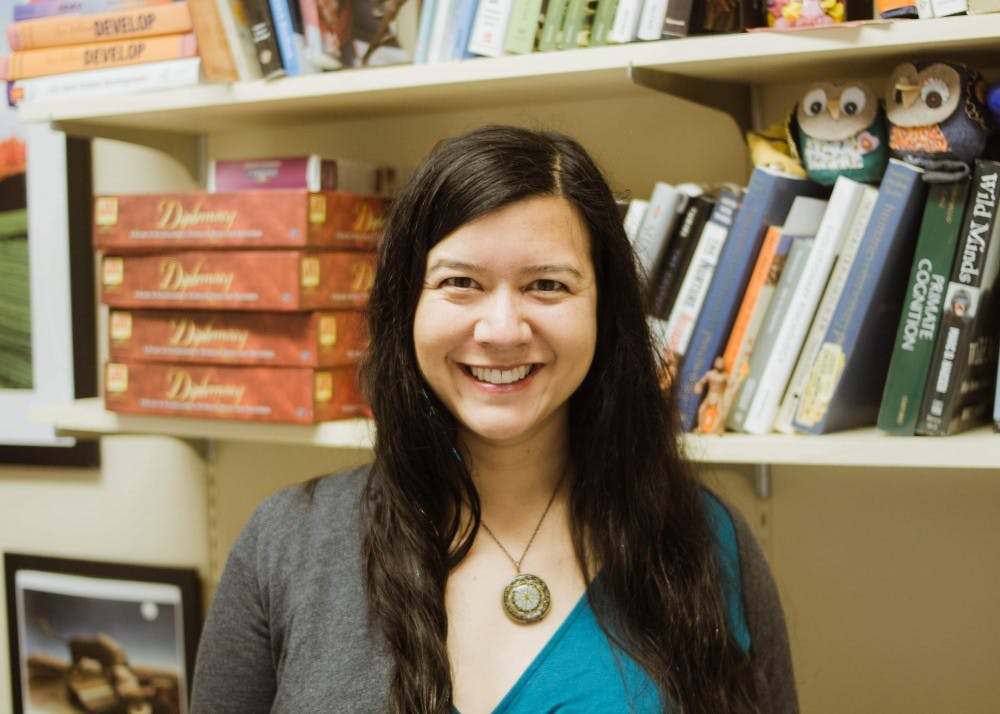
Louisa Egan Brad, psychology professor
Many students and faculty also applauded this year’s Diversity Dialogues and praised the work of Yuri Hernández Osorio.
“It (had) probably the most well thought out, most meaningful events (I’ve seen), with pretty good attendance, and it was really meaningful for folks who did turn out,” Johnson said. “Diversity Dialogues and clubs have really stepped it up for this campus in terms of trying to educate themselves and other folks on campus.”
Cortes also commended Hernández Osorio’s work and the important role she has for many students.
“Yuri’s office — it’s truly a safe space. Her office is so small, but she represents so much more of campus, and I wish she had a bit more power to do more stuff,” Cortes said. “I know she does a lot of behind-the-scenes work, and she’s been such a supporter of not just diversity and inclusion clubs, but students who are underrepresented on campus, and she gives us all a voice and a chance.”
Students also mentioned their appreciation for an ASUP Executive Board they said has prioritized diversity and inclusion.
“Having an ASUP Exec. Board that cares about diversity issues and ran on a campaign that was built around caring about diversity issues and actually investing more time and efforts into that was a really big success,” Johnson said.
Nath resurrected a diversity committee within ASUP that had existed in past years, which she said has connected diversity clubs to resources for planning events. Nath has invited them periodically to share their ideas, thoughts and concerns on diversity and inclusion on campus.
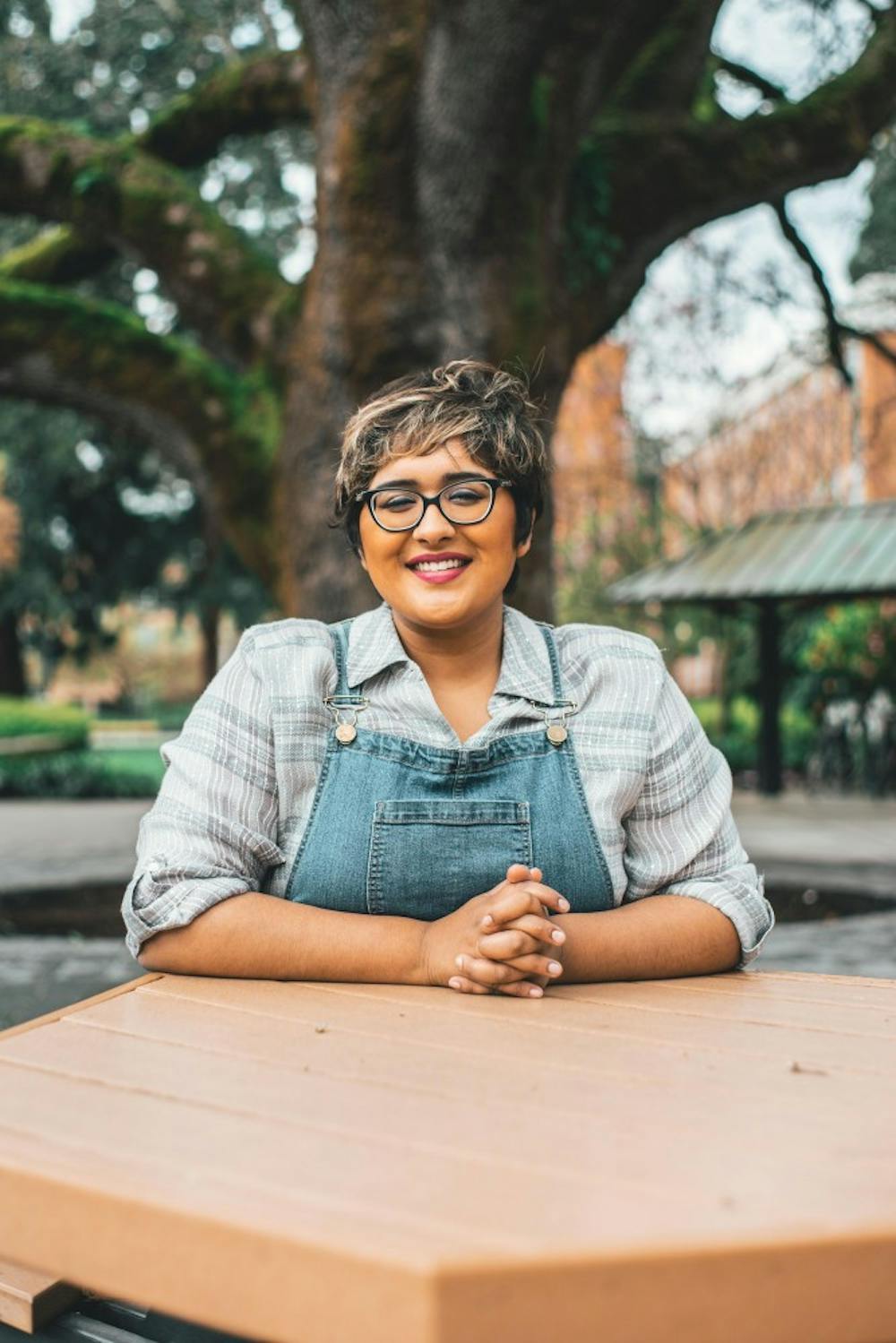
Sitara Nath, ASUP president
“We (ASUP) have institutional power in that we have some sources of money, and those are things that I want to give to those clubs more,” Nath said. “We’ve been connecting ASUP resources with students, whether that be contact information, financial resources, access to administrators, social media networks — all those things that we have access to, we’ve been connecting students to them.”
Several students also praised ASUP’s initiative in coordinating a protest against Fr. Paul Scalia as the Red Mass speaker in September, in which about 500 people participated. These students explained that to them, the University’s decision to bring Scalia to campus did not support diversity and inclusion.
“The silent protest in front of the chapel speaks volumes to how aware and involved students are, and I think that has come a lot from what ASUP has done to increase awareness and bring it to students’ attention,” said Emma Covert, the co-president of SASA.
Nath also expressed hope that this year’s ASUP leaders and projects have fostered a long-term commitment to diversity and inclusion in student government.
“There have been more diverse students (running for) ASUP or students who have priorities around diversity and inclusion, which for me is indicative of hopefully a legacy that Michael and I, in particular, can leave behind — that we’ve reminded people that a platform and a background in diversity and inclusion is legitimate and worthy of being advocated for,” Nath said.
Hiring of diverse faculty
Some students expressed that though they were grateful for faculty support, they would like to see more faculty of color at UP. They cited the Office of Admissions’ work in diversifying the student body, noting that 43 percent of the class of 2021 comes from underrepresented backgrounds, a number President Mark Poorman said in a February 2018 email was the highest in the university’s history.
However, students said that the number of faculty from diverse backgrounds is not proportional. Institutional Research shows that of 446 instructional faculty, 54, or 12.1 percent, are members of minority groups.
“That’s an issue because the faculty should be matching what the students look like,” Johnson said.
She and other students, as well as faculty, said they think it’s crucial for students of diverse backgrounds to have professors they can relate and look up to.
“(I want) concrete steps to recruit and retain excellent faculty of color, and I think that that would be helpful to get a critical mass of faculty of color on campus and also really essential for showing students of color that they belong at UP,” Egan Brad said.
Hill explained that a lack of faculty of color also sends a problematic message about the roles different people can occupy.
“I don’t want our students to think that only white people are people of authority or that only men are capable of authority and can create knowledge,” Hill said.
Qiera Nixon, sophomore and BSU secretary, described how she thinks recruiting diverse faculty would improve the experiences of students of color at UP.
“Having a professor of color allows students of color to relate to the material more or to feel more comfortable speaking out about what they have to say, because what they have to say might go against the majority, which at this school is white and very privileged,” Nixon said. “It just diversifies the university and adds professionalism to have multiple perspectives.”
Nixon also said that she’d like to see more classes centered around diverse perspectives and noted that in her experience, the ones already available fill up quickly. To her, this indicates that the student body is eager for these kinds of classes.
Morton also highlighted other benefits of hiring diverse faculty.
"When it comes down to it, there is just a certain area of life that they can’t relate to. They can’t feel comfortable chaperoning for clubs. They can’t feel comfortable relating to students who are struggling because no one else in their class looks like them,” Morton said.
Associate Provost Elise Moentmann explained that since the 2017-18 academic year, the Office of the Provost and Human Resources have developed efforts to train search committees to recruit more diverse applicants. They recommend departments post job openings beyond only the traditional places and encourage placing ads in organizations or societies geared toward underrepresented groups.
Search committees are also encouraged to reflect and recognize their own biases, such as privileging graduates of prestigious institutions or people who’ve taken a more “standard” path in academia. Committees must also designate a member as the “diversity advocate,” whose role is to hold the committee accountable for the best practices in seeking more diverse candidates. Human Resources and the Office of the Provost also encourage the formation of diverse search committees and student participation in the search committees, Moentmann said.
For example, the Theology Department approached ASUP to create a student search committee of students of diverse identities and ideologies to help with its search for a new theology professor, Nath said. The students interviewed the candidates and recommended one specializing in queer theology as well as gender and racial issues in theology, according to Nath. She recently found out the candidate was hired and will start at UP in the fall of 2020.
Carolina Cortes, sophomore president of La Mesa Redonda who was also on the search committee, mentioned that she would like to see this hiring practice extend to all departments.
“While I’m really excited to see Dr. Brandy Daniels be added to the faculty team, it shouldn’t really stop there. It should be within all departments, (to) see how we can do better and see how we can incorporate more diverse perspectives,” Cortes said.
Philosophy professor Norah Martin captured what many students and faculty said is key to remember when recruiting new professors.
“It’s really easy for us to replicate ourselves,” Martin said. “And if we want to be diverse, we have to stop replicating ourselves.”
Martin also praised the hiring of the new dean of CAS, Herbert Medina, who is a proponent for diversity and a first-generation college student who immigrated from El Salvador when he was eight years old.
What happened to the Office of Equity and Inclusion?
Several students and faculty also expressed that, along with what they see as a lack of hiring of diverse faculty, they were confused and concerned as to why the university has not hired a Director of the Office of Equity and Inclusion, as President Mark Poorman pledged in a February 2018 campus-wide email.
“I was like, ‘This school’s actually listening to the student body!’” junior and BSU member and former diversity collaborator Autumn Clay said. “They were making it seem like they were doing work, and then it was like you never heard about it ever again.”
Clay and other students pointed to the lack of email updates clearly stating the status of the position as a source of their confusion and frustration.

Autumn Clay, BSU member and former diversity collaborator
The University conducted a search, but did not hire anybody as the director of the Office of Equity and Inclusion. Instead, the administration created the new academic unit of International Education, Diversity and Inclusion to absorb some of the responsibilities that the director position would’ve had, according to Eduardo Contreras.
Contreras, assistant provost for International Education, Diversity and Inclusion and director of Studies Abroad, explained that the director role was to be an administrative position that would work across campus to set up a structure for equity and inclusion by working with Diversity and Inclusion Programs, the Office of the Provost and Athletics.
Contreras chaired a search committee that began its work in late spring 2018 and made a hiring recommendation to the Provost’s Office.
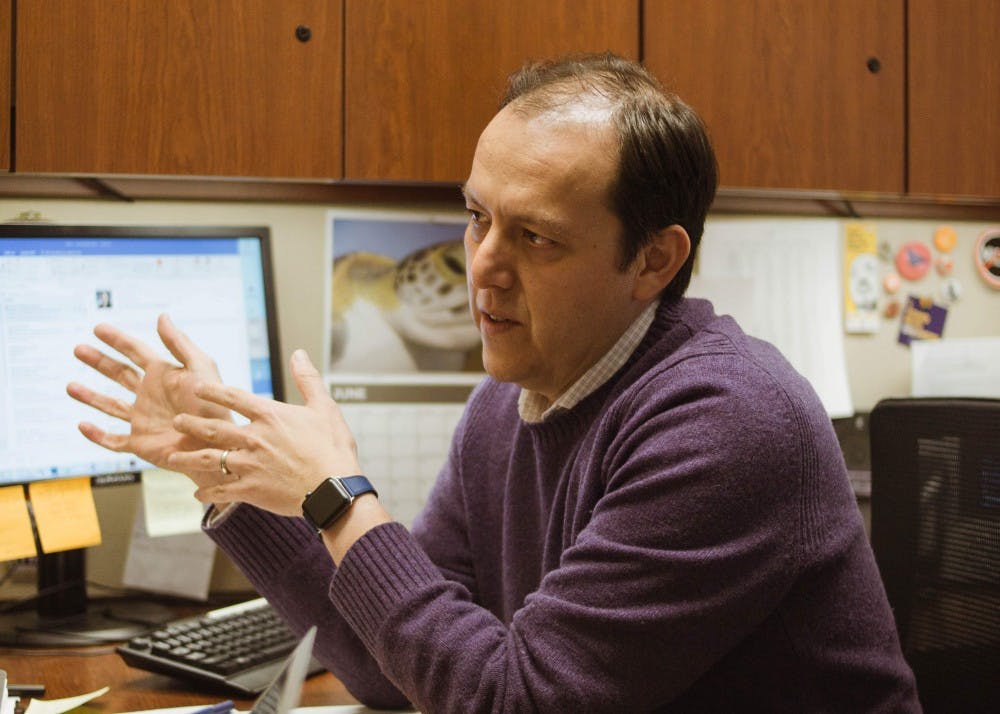
Eduardo Contreras, assistant provost for International Education, Diversity and Inclusion and director of Studies Abroad
"There was deep enthusiasm, especially for the second candidate,” said Saturn, who attended the candidates’ presentations. “She had the perfect skill set and really hit the job description kind of out of the park with her presentation and things she had to bring to the table.”
Saturn and other faculty and staff who interviewed the candidates said that they were confused over the summer about hiring progress.
“We wondered, when I would run into people in the hallway over the summer and say, ‘Hey, have you heard anything (about the search)?’ And as you know, there was never anybody appointed,” Martin said.
Contreras explained that in the hiring process, a consensus was not reached on who to hire, and the search was called off. With this decision, the administration decided to implement an organizational change that Contreras said has been discussed since Vision 2020’s release (the University’s five-year strategic plan) and create the new academic unit of the Office of International Education, Diversity and Inclusion, of which Contreras has served as assistant provost since June 2018.
“The infrastructure now I think better serves the university. And it doesn’t preclude future searches for a director position,” Contreras said. “That position was designed to support equity and inclusion, and that is what I’m doing fundamentally in this new position. It’s still a focus, and in many ways, it’s an enhanced and elevated focus because it’s happening at a higher level than what it would have been, and it’s something that can grow.”
Some students and faculty are concerned that Contreras is overburdened by having two jobs, as assistant provost and the director of Studies Abroad.
“It’s definitely a lot to put on one person, especially since it was supposed to be a whole separate position,” Legaspi said.
However, the university plans to hire a new director of Studies Abroad by July, allowing Contreras to focus solely on his responsibilities as assistant provost for International Education, Diversity and Inclusion.
Johnson explained that while she would still appreciate a separate position for an Office of Equity and Inclusion director, she is confident in Contreras’ abilities and eager for him to have only one role.
“Next year, I think it’ll be a real advantage to have someone like him in this position being able to focus all his energy on this work,” Johnson said. “He has really good ideas and has a lot of potential to do a lot of good in that position.”
Several professors also conveyed their support for the new position.
“The university is very lucky to have Eddie Contreras. When he has his time freed up because we have somebody else doing Study Abroad, I imagine that he’d be doing a lot of great things in the diversity arena,” Martin said. “Some people are cynical about the University’s commitment to diversity and inclusion. It’s on the strategic plan, and anything on the strategic plan, we’re doing. I think the effort is a sincere effort, and it’s just a question of how that gets done.”
Hernández Osorio also expressed that she is excited about the new academic unit. She said she doesn’t see an immediate need to bring back the search for a director of equity and inclusion, as the university’s greater priority should be financially committing to diversity, equity and inclusion, although she thinks it’s important to ensure there are enough people working on these efforts.
“Dr. Contreras being assistant provost is two steps in the right direction. I’m still an advocate for getting more than two people with the world ‘diversity’ in their job titles,” Hernández Osorio said. “Change happens when everyone becomes a stakeholder in diversity, equity and inclusion.”
Other UP community members also said that they would like to see cultural changes at UP and know that the university commits to diversity and inclusion long-term.
“We have people really suffering, and I feel this moral obligation to honor and hear those stories...and find better ways of supporting students,” Saturn said. “And it is intersectional because I’ve heard stories from staff and faculty too, about how there needs to be a cultural shift here to really honor women, minorities, members of the LGBTQ+ community.”
The Beacon encountered some difficulty in finding professors willing to speak on the record about diversity and inclusion efforts at UP. Some professors expressed off the record that they were hesitant or uncomfortable speaking about it due to concerns about facing repercussions because of what they described as a culture in which not all community members value diversity and inclusion efforts.
Other people said they appreciate the direction Vision 2020 provides, but that they feel it’s necessary to act on the values it sets forth.
“This school prides itself on being progressive when it comes to diversity and inclusion,” Clay said. “Vision 2020 is a step in the right direction. But I want Vision 2020 to not just be a vision, but to be a reality.”
Some people also highlighted that diversity and inclusion work cannot be considered completed once 2020 is here.
“If this is to be completed by this year, there’s the question of, is this the final step that you’re going to be taking? Or are you going to be doing it as a continuous process to promote inclusivity?” Cortes said.
And others, like Morton, succinctly summarized the vision they have for UP.
“I’m going to be an alumni of the University of Portland, and I want this to be a school that I’m proud to be an alumni of,” Morton said.
Totoian is a reporter for The Beacon. She can be reached at totoian20@up.edu.



